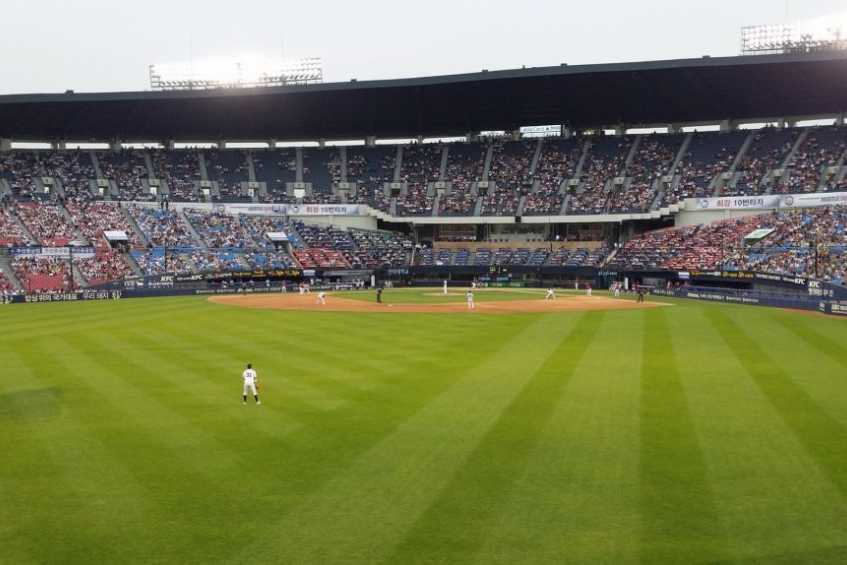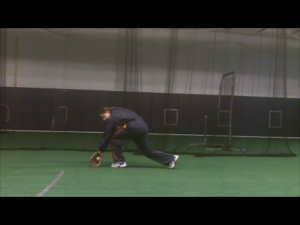
Following are 3 indoor fielding drills that coaches should be doing with players. Failure to do these indoor fielding drills often has teams get off to a slow start defensively. As I have written about in the past, indoor fielding that coaches have players perform often hurts more than helps, come the season. The reason for that is that balls bounce so true indoors that players get away with incorrect fielding habits. Players know exactly where balls hop on smooth surfaces and know for sure balls will hop, leading to lazy habits. The problem is that outside, on dirt and grass, those true and for-sure hops are less likely to occur. Therefore, the lazy habits players incurred indoors carryover, but do not work when outside practice and games begin. To avoid players becoming lazy and to encourage good fielding fundamentals, coaches should do the following three indoor fielding drills.
Set a taped line or a broom stick down and have players begin by standing a foot or so behind it, roll low hop ground balls to them where they must reach out and catch the ball in front of the object, before crow hopping over it to throw. After a period, players back up and perform the same drill by charging the ball and catching it in front as above. This drill helps players get their hands out front, stay low, and keep their weight forward, in order to hop over the object, when throwing.

Coaches get about 25 feet from players and bounce ground balls with just one hop at various heights. Players have to decide to either charge or lay back, with the goal of getting balls in the air before bouncing a second time, or on the short hop. When players feel they cannot get to the ball in that manner, they lay back and wait for the high hop on the second bounce, thereby avoiding the in-between hop the ones that come between the knees and waist, which are the toughest of all balls to catch. Coaching players to charge, when in doubt, is an added benefit of this indoor fielding drill.
Many young ball players do not take good angles to ground balls to their left and right. To help them with this, coaches set two objects, as extra fielders gloves, down on the floor, one three feet to their right and one three feet to their left. Coaches roll or hit balls firmly or semi-firmly to the player's left and right. Players must first go around the on-the-ground objects before charging the ball, when time. The drill helps players learn to take better angles to the ball by correctly thinking to get in front of balls before charging them, as many charge first, creating a bad angle to catch and or throw the ball to first. Using these indoor fielding drills helps players develop good fielding habits, and not lazy ones, making them much more ready for eventual outdoor practices and games.
After playing major league baseball, Jack Perconte has taught baseball and softball since 1988 and offered valuable coaching training too. He has helped numerous youth players reach their potential, as well as having helped parents and coaches navigate their way through the challenging world of youth sports. Jack is one of the leading authorities in the areas of youth baseball training and coaching training advice.
All Jack Perconte articles are used with copyright permission.There are 0 comments on "Indoor Fielding Drills Coaches Must Do"
CameronPugh says:
"Such a unique perspective on the game..."
On Such a unique perspective on
chandler allen says:
"Hi my name is chandler, i’ve enjoyed..."
On Wanting to tryout for summer ball. as an 18 year old
david graham says:
"With no current MLB team in Canada,..."
On With no current MLB team in